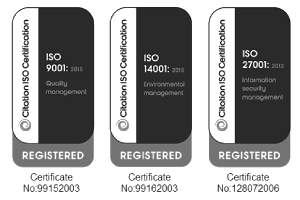Health and safety in the spotlight
A high-hazard industry, the waste sector is high on the list of priorities for the Health and Safety Executive. Zoe Betts, Legal Services Manager, and Jonathan Cowlan, Health and Safety Senior Manager at Pinsent Masons LLP, highlight the true costs of health and safety issues to local authority waste services.
The waste sector typically involves high-hazard activities such as waste collection, recycling, and disposal. This diverse range of activities presents numerous challenges to employers and occupational safety and health professionals. Not only is the work carried out in a variety of settings but it involves significant interaction with members of the public. We explore the statistical data, the true costs of health and safety incidents and raises a range of practical and regulatory issues for employers to consider.
The human costs
The statistics make for depressingly familiar reading, especially because they don’t reflect the considerable variation in performance within the industry and the range of service providers (including local authorities, major private contractors and SMEs).
According to figures published by the Health and Safety Executive (“HSE”) in October 2019, the waste sector is still the most dangerous industry, aside from agriculture. The rate of fatal accidents is nearly 5 times higher than the construction sector and 17 times higher than the average across all other industries. Whilst the number of fatalities in 2018/19 (at 7) was lower than 2017/18, there is no room for complacency.
Health and safety incidents are commonly foreseeable and avoidable and the statistics also bear this out. Over the five year period from 2014 – 2019, 30% of people killed in the waste sector came into contact with moving machinery, 28% were struck by a moving vehicle and 16% were struck by moving or falling objects. These types of incidents founded the basis for a series of successful HSE prosecutions over the last decade of public and private sector organisations.
Against this backdrop, it is unsurprising that the waste sector is high on the list of priorities for the HSE, both in terms of proactive inspections and enforcement action following serious incidents. The regulator has implemented a sector plan with a dedicated inspector. Quite rightly, the sector plan focusses on both aspects of “health and safety” instead of the traditional emphasis on safety only. The HSE’s priorities are to see “significant improvements in all areas of health and safety performance, in particular:
- a reduction in the number of people killed by moving vehicles / caught in machinery; and
- a reduction in cases of musculo-skeletal disorders (“MSDs”) and occupational lung disease”.
Key issues for duty holders
From a practical perspective, some key areas for employers are:
- Collection route specific risk assessments – how many will you need; who will undertake and review them; and how will they be communicated to crews?
- High levels of noise exposure – particularly in kerbside glass collections and materials recovery facilities.
- Manual handling – MSDs account for around one third of reported injuries in the industry and the majority are associated with collection activities
- Mental health – according to the HSE, over a third of reported cases of new or long-standing ill-health in 2018/19 were attributed to stress, depression or anxiety
From a management perspective, some key areas to consider are:
- Effective supervision and monitoring - how many supervisors do you need and what will ‘supervision’ and ‘monitoring’ look like in practice (for they are two different things)?
- Competency and training – what skills, knowledge and experience are needed for different job roles and how are employees assessed?
- Use of contractors and agency staff – do you have robust procedures for these types of activities and workers?
Business costs
Time spent on these issues is unlikely to be time wasted. Aside from the human costs, there are significant business costs which arise out of a serious health and safety incident. The more immediate (but not necessarily insured) costs include lost time, sick pay, production delays, damaged plant and equipment, repairs, enhanced safety measures and legal fees. The less tangible, but no less real, costs can include lost contracts, failed tenders, decreased share price and reputational damage (remember Merlin Attractions and the crash on the Smiler at Alton Towers?). The HSE suggest that for every £1 compensated by insurance, £10 is lost from uninsured costs due to injury and ill health caused by work.
As well as the monetary cost, there is the investment of time to consider. HSE investigations are rarely concluded swiftly. Inspectors have very wide powers to gather evidence pertaining to the investigation and co-operation is strongly advised. In addition to the power to interview (voluntarily, by compulsion and under caution), HSE Inspectors are legally entitled to enter premises; make examinations; take samples of articles or substances; take measurements, photographs and recordings; seize an article or substance; require the production and inspection of documents; and take copies of such material.
Inspectors may also issue enforcement notices. An improvement notice alleges a breach of health and safety legislation which must be rectified within a prescribed period of time. A prohibition notice requires the immediate cessation of an activity which, in the Inspector’s opinion, poses a risk of serious injury. Obstructing an Inspector, making false statements, refusing to answer questions when compelled to do so and failing to comply with an enforcement notice are criminal offences contrary to the Health and Safety at Work etc Act 1974. Understanding the powers of the HSE, and your own rights and obligations, is a vital part of the process.
A regulatory case can commonly take between two and four years (or more) from the date of the incident to the date of the sentencing hearing following a conviction. The management time and internal resources that must be devoted to an HSE investigation, and a prosecution if one is brought, are significant. As the adage goes, “If you think safety is expensive, try having an accident”.
Financial costs
When it comes to securing convictions, the HSE ‘strike rate’ is high. The latest figures reveal a 92% success rate in securing a conviction for at least one offence in cases where a verdict was reached.
Mandatory Sentencing Guidelines for all health and safety offences and corporate manslaughter were implemented just over 4 years ago and the consequences of non-compliance have never been more serious.
For individuals who are convicted of H&S offences, the custody threshold has been lowered. In other words, someone is now more likely to be sentenced to a term of imprisonment than was previously the case for the same offence. For organisations that are convicted of offences, the financial penalties have increased significantly. We have already seen that in the year followin the implementation of the Guidelines, there were more fines in excess of £1 million than in the preceding 20 years.
Fines are tariff-based and predicated on the organisation’s turnover (not profit). Penalties are also linked to the degree of harm that was risked by the offender’s breach, rather than any harm that was actually caused.
The Guidelines state that the fine “must be sufficiently substantial to have a real economic impact which will bring home to both management and shareholders the need to comply with health and safety legislation”. Given the highly hazardous nature of many waste sector activities, and the drive to improve health and safety performance, further prosecutions and severe penalties are to be expected.
Concluding thoughts
Waste sector services are an essential and valuable part of our daily lives. Increasingly innovative means are being introduced in order to meet increasingly more challenging targets. And yet the spotlight remains firmly fixed on the waste sector as a whole in terms of health and safety compliance. Cultural attitudes take time to change and become truly embedded. Only then should we start to see a widespread improvement in behavioural safety and higher health and safety standards; all resulting in fewer instances of injury and ill-health.
The HSE’s sector plan encourages collaborative working between stakeholders in the industry. The Waste Industry Safety and Health Forum (“WISH”), SWITCH in Scotland, APSE, ESA, the HSE website and your fellow local authorities are all rich sources of guidance and best practice. We endorse this sharing of ideas in the pursuit of a safer and healthier sector for all.

Burnish your health and safety credentials book a place on one of our training courses!
Health & Safety in Waste and Environmental Services
£249+VAT (APSE members) £429+VAT (Non-members)
Delivered over two half-day sessions, this masterclass is led in conjunction with our legal partners, Pinsent Masons. You will develop an understanding of the “big picture” on health and safety, asking questions such as: how serious is it? Why should we be concerned in waste and environmental services? What are the issues for us? What are the hazards and risks for my specific service? The course explores case law and best practice case studies.`
This course has been reintroduced in response to the ongoing prosecutions of local authorities for breaches of health and safety regulations.
Book your place here



.png)



.png)